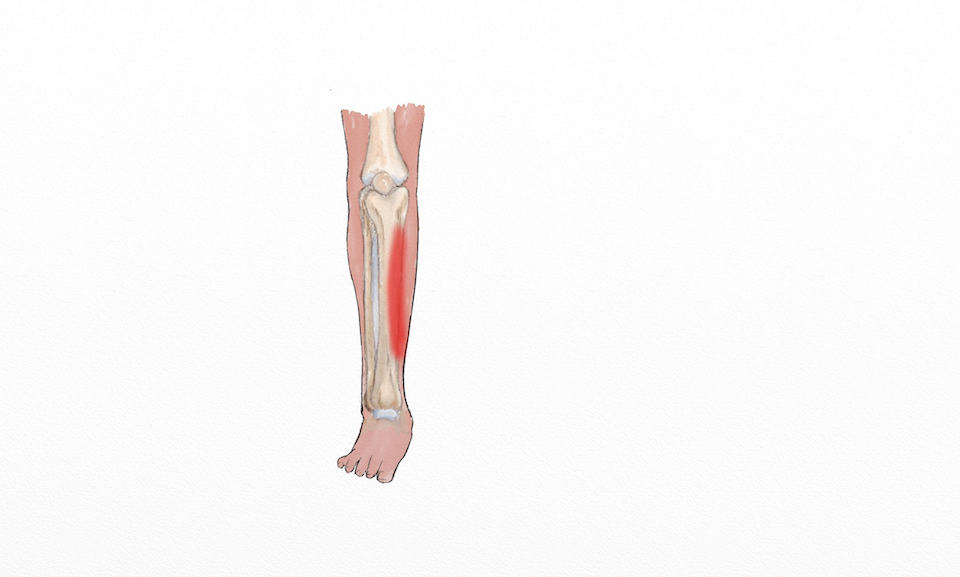Athletes across the board suffer from shin splints. Medically termed ‘medial tibial stress syndrome’, shin splints are often recognizable by a generalized pain along the tibia (shin bone).
It seems that athletes, regardless of their age, sport, or level of expertise suffer from shin splints over the course of their careers. But what are they exactly?
Shin splints are caused by an inflammation of the tissue that wraps around the tibia, which results in the tightening of muscles. A response where the body to creates additional scar tissue, which increases the tension on the muscle. This cycle of strain pulls on the muscle’s attachment to the tibia, ultimately inducing pain.
Repetitive stress on the muscles and connective tissues around the tibia is the main cause of shin splints. Stress in these region can be generated by continuous exercise, pressure from jumping or landing, or sudden changes in movement. People with flat feet are at a higher risk of developing shin splints due to the increased pressure to the medial aspect of the foot during weight-bearing activities.
Often, people develop shin splints because of a sudden change in their workout regimen like when a runner increases their mileage too quickly, or changes the surface they run on (e.g. from grass to pavement.)
Due to their prevalence, treatment options for shin splints are well-known. The most important step is to decrease one’s level of physical activity – that could mean completely stopping the activity, stopping temporarily, or modifying workouts to an intensity where the pain is no longer felt. One option may be to combine weight-bearing activities with non-weight-bearing activities. For example, a runner may swim for 30 minutes, and run for 20 minutes, as opposed to running for an hour.
Icing the affected areas could ease the pain if it is uncomfortable. The ice should be left on for 20 to 30 minutes, and applied at an interval of three to four hours, several times a day.
Treatment for shin splints is available for students at the David L. MacIntosh Sport Medicine Clinic upon referral by a doctor. Consistently visiting a physiotherapist is highly recommended for those enduring shin splints as physiotherapists can perform ultrasounds and EMS (electronic muscle stimulation) therapies which are intended to decrease the pain.
Recovery can take anywhere three to six months. Once your shin splints have healed, your return to sport should be gradual to avoid aggravating the injury again. Finally, it is important to remember that every body heals differently; which is why varied recovery periods among patients are normal.


